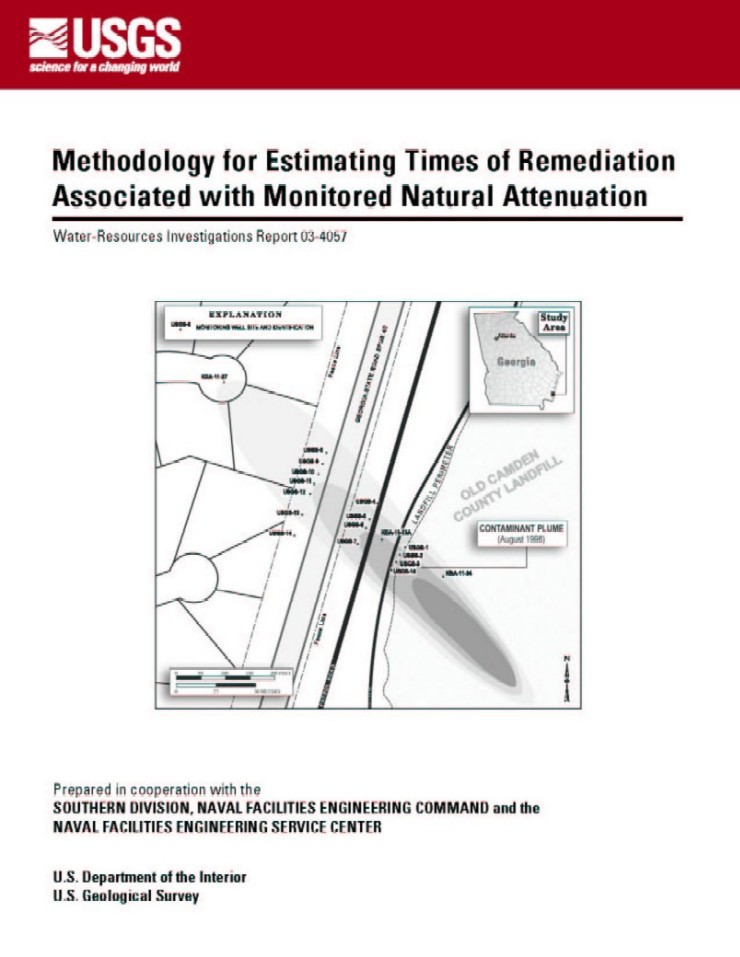
 |
Methodology for Estimating Times of Remediation
Associated with Monitored Natural Attenuation
By Francis H. Chapelle, Mark A. Widdowson, J. Steven Brauner, Eduardo Mendez III, and Clifton C. CaseyON LINE ONLY |
For comments or questions, SC Pubs Information
| USGS | Biology | Geology | Geography | Water | WRI Reports | Water Related Reports |
|
U.S. Department of the Interior, U.S. Geological Survey
Maintainer: Publications Team Last update: 08:54:41 Thu 25 Sep 2003 Privacy Statement || Disclaimer || Accessibility URL: http://pubs.water.usgs.gov/wri034057 |

|